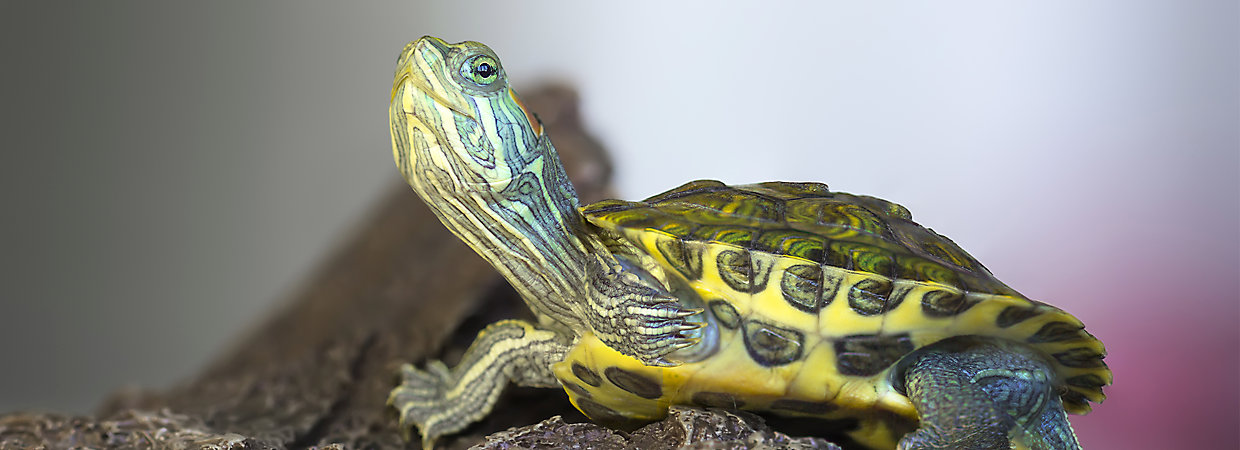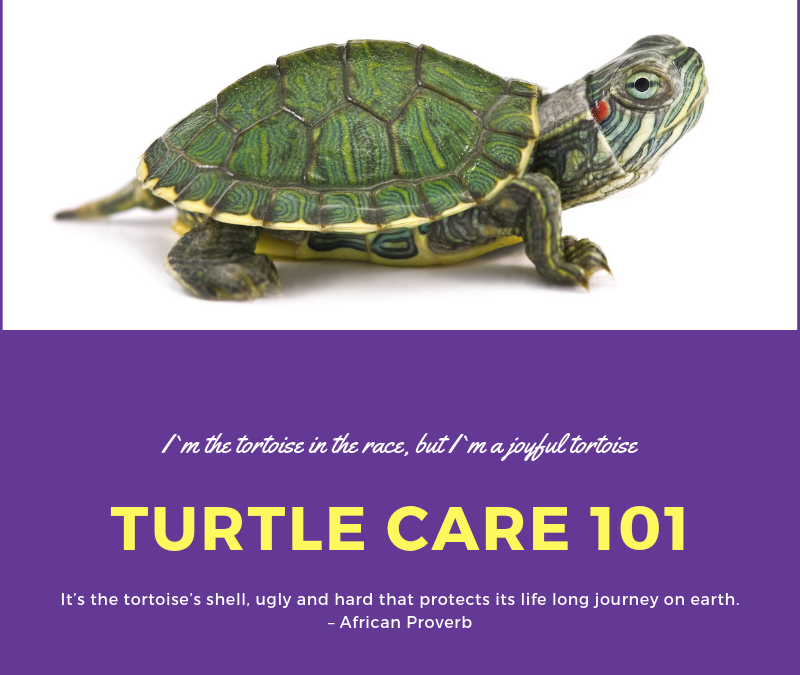To care for a turtle pet, provide a clean tank, proper diet, and regular veterinary check-ups. Creating a suitable habitat with clean water, heat lamp, and basking area is crucial for your turtle’s well-being.
Additionally, ensure your turtle’s diet consists of a variety of vegetables, fruits, and occasional protein sources. Regularly monitor their behavior and health to address any issues promptly. By providing a nurturing environment and attentive care, you can ensure your turtle remains healthy and happy.
Remember, turtles are long-lived pets, so commitment to their care is essential for their longevity and well-being.
Choosing The Right Turtle Species
When selecting a turtle species, it’s vital to consider the size of the turtle as it impacts the space requirements needed.
- Smaller turtles like Red-eared sliders require less space compared to larger species like African sidenecks.
- Ensure you have a suitable habitat that can accommodate the size of the turtle species you choose.
Research various turtle species to understand their specific care needs and lifestyle preferences.
- Different species have unique dietary requirements and habitat preferences.
- Consider factors such as temperature, humidity levels, and basking spots required for each species.
Setting Up The Habitat
Setting up the habitat for your turtle is crucial to ensure its well-being and happiness. A proper habitat includes a suitable tank or enclosure, a basking area, and a water area. By creating a comfortable and safe environment, you can help your pet turtle thrive. Let’s dive into the essential steps for setting up the perfect habitat for your turtle.
Selecting The Right Tank Or Enclosure
When selecting a tank or enclosure for your turtle, consider the species and size of your pet. Turtles need ample space to move around. A general rule of thumb is to provide at least 10 gallons of water for every inch of shell length. Ensure the tank has a secure lid to prevent escape and maintain a stable temperature and humidity level within the enclosure.
Creating A Suitable Basking Area
A basking area is crucial for turtles to regulate their body temperature and receive UVB light. Choose a flat and sturdy platform that allows the turtle to completely leave the water. Use non-toxic materials such as rocks or commercially available basking platforms. Position the basking area under a UVB lamp to provide essential light for your turtle’s health.
Setting Up The Water Area
The water area in the turtle’s habitat should be spacious enough for swimming and diving. Ensure the water depth is appropriate for your turtle’s species, with a gradual sloping ramp or easy access for entry and exit. Use a water filter to maintain water quality and regularly clean the tank to prevent the build-up of bacteria and waste.
Maintaining Water Quality
To care for a turtle pet, maintaining water quality is crucial. Regularly clean the tank, change the water, and use a good filtration system to keep the water clean and safe for your turtle. Monitoring the pH levels and temperature of the water is also essential to ensure a healthy environment for your pet.
Maintaining water quality is crucial to the health and well-being of your turtle pet. Turtles are aquatic creatures that require clean and safe water to thrive. Poor water quality can lead to various health problems, including respiratory infections, shell rot, and other diseases. In this section, we will discuss some essential tips for maintaining water quality in your turtle’s habitat.Using A Good Water Filtration System
One of the best ways to maintain water quality is by using a good filtration system. A water filtration system helps to remove debris, uneaten food, and waste products from the water, keeping it clean and safe for your turtle. There are various types of water filters available in the market, including mechanical, biological, and chemical filters. Mechanical filters remove physical debris, while biological filters use beneficial bacteria to break down waste products. Chemical filters use activated carbon to remove impurities and toxins from the water. Choose a filtration system that suits your turtle’s needs and size of the tank.Regular Water Testing And Changes
Regular water testing and changes are essential to ensure that the water quality is optimal for your turtle. You should test the water regularly using a water testing kit to check for levels of ammonia, nitrite, and nitrate. High levels of these chemicals can be toxic to your turtle and affect its health. If the levels are high, you should perform water changes to dilute the toxins. The frequency of water changes depends on the size of the tank, the number of turtles, and the filtration system used. As a general rule, you should change 25% to 50% of the water every two weeks.Conclusion
Maintaining water quality is essential for the health and well-being of your turtle pet. Using a good filtration system, regular water testing, and changes are crucial to ensuring that the water is clean and safe. Keep in mind that turtles are sensitive to changes in water quality, so it’s essential to keep the water parameters stable and consistent. By following these tips, you can provide your turtle with a healthy and happy home.
Credit: www.petsmart.com
Feeding And Nutrition
Feeding and nutrition are vital aspects of caring for a turtle pet. Proper diet and nutrition play a crucial role in maintaining the health and well-being of your shelled companion. In this section, we will delve into understanding the dietary needs of turtles, offering a balanced diet, and supplementing with calcium and vitamins.
Understanding The Turtle’s Dietary Needs
Turtles are omnivorous, meaning they require a varied diet consisting of both plant matter and animal protein. Their dietary needs vary depending on their species, age, and size. It’s essential to research the specific dietary requirements of your turtle species to ensure you are providing the right nutrients.
Offering A Balanced Diet
A balanced diet for your turtle should include a mix of leafy greens such as kale, dandelion greens, and collard greens, along with vegetables like carrots, squash, and bell peppers. Additionally, offering protein sources like insects, earthworms, and commercially prepared turtle pellets will help meet their nutritional needs.
Supplementing With Calcium And Vitamins
Calcium and vitamin supplementation are crucial for maintaining the health of your turtle’s shell and overall well-being. Dusting their food with a calcium supplement and providing multivitamin supplements as directed by a reptile veterinarian will help prevent nutritional deficiencies and ensure optimal health.
Providing Proper Lighting And Heating
Providing proper lighting and heating is essential for the health and well-being of your pet turtle. Turtles require specific lighting and heating conditions to mimic their natural habitat and ensure their overall health. Here’s a guide on how to provide the right lighting and heating for your turtle pet.
Using Uvb Lighting For Shell Health
Turtles need UVB lighting to synthesize vitamin D3, which is crucial for their shell health and overall well-being. When setting up the lighting for your turtle’s habitat, ensure that you use a UVB bulb specifically designed for reptiles, as regular household bulbs do not emit the necessary UVB rays. Position the UVB light within the enclosure so that it reaches the basking area where your turtle spends most of its time.
Maintaining Optimal Basking Temperatures
Maintaining the right basking temperature is vital for your turtle’s digestion, metabolism, and immune system. Provide a basking area with a heat lamp or ceramic heat emitter to create a warm spot where your turtle can regulate its body temperature. The basking spot should reach a temperature of around 85-90°F (29-32°C) for most turtle species. Use a reliable thermometer to monitor the basking spot temperature regularly to ensure it stays within the optimal range for your turtle’s species.
:strip_icc()/red-eared-sliders-1238387_final-01-resized-bb642b67d2ff435394f67ac551a1bae5.jpg)
Credit: www.thesprucepets.com
Handling And Interaction
Learn the essentials of turtle care by providing a suitable habitat with clean water, a basking area, and proper diet. Interact with your pet through gentle handling, regular feeding, and observation to ensure its well-being and happiness. Establish a routine for feeding, cleaning, and monitoring to maintain a healthy and thriving turtle companion.
Handling and Interaction is a crucial aspect of caring for a turtle pet. Turtles, although low-maintenance, require proper handling and interaction to thrive. In this section, we’ll discuss the turtle’s stress sensitivity, proper handling techniques, and creating enriching activities for your turtle pet.Understanding The Turtle’s Stress Sensitivity
Turtles are sensitive creatures, and they can easily become stressed in unfamiliar environments or situations. Signs of stress in turtles include hiding, not eating, and excessive basking. It’s essential to understand your turtle’s stress sensitivity to ensure you’re providing a comfortable environment for them. Keep your turtle’s habitat consistent, and avoid sudden changes in their routine or habitat.Proper Techniques For Handling
When handling your turtle, it’s crucial to use proper techniques to avoid injuring them. Always support your turtle’s body and avoid lifting them by their limbs. Additionally, avoid sudden movements and loud noises that could startle your turtle. If your turtle seems uncomfortable or stressed, it’s best to put them back in their habitat and try again later.Creating Enriching Activities
Turtles are curious creatures, and they enjoy exploring their environment. Creating enriching activities for your turtle can help keep them mentally and physically stimulated. Some ideas include adding hiding spots, adding live plants to their habitat, or placing a shallow dish of water outside of their habitat for them to explore. It’s essential to ensure any activities you provide are safe for your turtle and don’t pose a risk of injury or stress. In conclusion, proper handling and interaction are crucial aspects of caring for a turtle pet. Understanding your turtle’s stress sensitivity, using proper handling techniques, and creating enriching activities can help ensure your turtle thrives in their habitat.Healthcare And Regular Check-ups
Caring for your turtle pet involves ensuring their healthcare and regular check-ups. Just like any other pet, turtles require proper medical attention to maintain their health and well-being. In this section, we’ll cover how to recognize common health issues and the importance of scheduling veterinary visits for your turtle.
Recognizing Common Health Issues
It’s essential to be able to identify common health issues that may affect your turtle. Some signs that your turtle may be experiencing health problems include changes in appetite, abnormal behavior, swelling or discharge from the eyes or nose, and shell abnormalities. If you notice any of these symptoms, it’s important to seek veterinary care promptly to address the issue.
Scheduling Veterinary Visits
Regular veterinary check-ups are crucial for maintaining your turtle’s health. Schedule visits with a reptile or exotic animal veterinarian who has experience in treating turtles. During these visits, the vet will conduct a thorough examination of your turtle, including checking for any signs of illness, monitoring their weight and overall condition, and addressing any concerns you may have about their health.

Credit: www.wikihow.com
Legal Considerations And Ethical Ownership
Understanding Local Laws And Regulations
Before getting a pet turtle, understand your area’s laws and regulations regarding turtle ownership.
- Check if there are any restrictions on keeping turtles as pets in your location.
- Ensure you acquire your turtle from a legal and reputable source.
- Comply with all necessary permits or licenses required for turtle ownership.
Importance Of Ethical And Responsible Ownership
Responsible ownership is crucial for the well-being of your pet turtle.
- Provide a suitable habitat that meets your turtle’s needs for space and environment.
- Offer a balanced diet and regular veterinary care to ensure your turtle’s health.
- Never release a pet turtle into the wild as it can disrupt the ecosystem.
Conclusion
In caring for your turtle pet, remember to provide proper diet, clean habitat, and regular check-ups. Your turtle’s well-being depends on your attention and care. By following these tips, you can ensure a happy and healthy life for your beloved pet.
Happy turtle keeping!






Leave a Reply